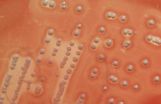(Press-News.org) LA JOLLA, CA--A synthetic derivative of the curry spice turmeric, made by scientists at the Salk Institute for Biological Studies, dramatically improves the behavioral and molecular deficits seen in animal models of ischemic stroke and traumatic brain injury (TBI). Two new studies suggest that the novel compound may have clinical promise for these conditions, which currently lack good therapies.
Ischemic stroke is the leading cause of disability and the third leading cause of death of older people in the United States, while TBI is the leading cause of death and disability in both civilians and military personnel under the age of 45; in particular, it is the major cause of disability in veterans returning from Iraq and Afghanistan. In both conditions, those who survive frequently have serious behavioral and memory deficits. The only FDA-approved treatment for stroke is tissue plasminogen activator (TPA), which is effective only in about 20 percent of cases. There is no clinically documented treatment for TBI.
In earlier studies, David R. Schubert. Ph.D., and Pamela Maher, Ph.D., in the Salk Cellular Neurobiology Laboratory had developed a series of new compounds using a novel drug discovery paradigm that starts with natural products derived from plants; it then calls for selecting synthetic derivatives that show efficacy in multiple assays testing protection against various aspects of the nerve cell damage and death that occur in brain injuries and in age-associated neurodegenerative diseases. One compound, called CNB-001, which was derived from curcumin, the active ingredient in the spice turmeric, proved highly neuroprotective in all of the assays; it also enhanced memory in normal animals.
While the Salk group has a great deal of expertise in age-associated neurological diseases such as Alzheimer's, they do not run animal models of TBI and stroke. "To test the prediction that drugs from our new drug discovery scheme will work in multiple models of CNS disease and trauma," Schubert explains, "we undertook a series of experiments to assay the drugs in collaboration with researchers at Cedars-Sinai and UCLA, who are leaders in the fields of stroke and TBI, respectively, and appreciate the potential for therapeutics based on natural products and their derivatives."
Employing the same animal model of stroke that was used to develop TPA, Paul Lapchak, Ph.D., of the Department of Neurology at the Burns and Allen Research Institute at Cedars-Sinai Medical Center in Los Angeles, collaborated with Schubert's team in a study that showed that CNB-001 was at least as effective as TPA in preventing the behavioral deficits caused by stroke. The study, published in the Dec. 2, 2010 edition of the Journal of Neurochemistry, also demonstrated that unlike TPA, which reduces clotting in the blood vessels of the brain, the Salk compound has a direct protective effect on nerve cells within the brain. Maher has found that it maintains specific cell signaling pathways required for nerve cell survival.
Similarly, in a study to be published in early 2011 in Neurorehabilitation and Neural Repair, Fernando Gomez-Pinilla, Ph.D., and his colleagues in the Department of Physiological Science and Division of Neurosurgery at the University of California, Los Angeles used a rodent model of TBI to demonstrate that CNB-001 dramatically reversed the behavioral deficits in both locomotion and memory that accompany the brain injury. As with stroke, CNB-001 was again found to maintain the critical signaling pathways required for nerve cell survival, as well as the connections between nerve cells that are lost with the injury.
The results of these two studies, which used two distinct models of brain injury, indicate that the Salk compound has clinical potential in conditions where there is currently no effective treatment.
"Existing drug therapies for complex neurological conditions such as stroke and Alzheimer's disease target only one aspect of the condition, while in fact many different factors contribute to the pathology," observes Schubert. "In the drug discovery program our lab uses at Salk, drug candidates must show efficacy in tissue culture models of several aspects of the condition before they are introduced into animal models. We believe that this approach is making an important difference in the discovery of effective drugs."
In related work, Maher used the same drug discovery paradigm to identify a compound that is effective in animal models of Huntington's disease. "Although these brain disorders appear very different, they share common changes in the nerve cells, which suggests that compounds that prevent these changes will be effective in multiple disorders," she notes.
INFORMATION:
In addition to Schubert and Gomez-Pinilla, Aiguo Wu, Ph.D., and Zhe Ying of the UCLA Department of Physiological Science contributed to the TBI study.
Both studies were supported by the National Institutes of Health; Gomez-Pinilla's study received additional funding from the Craig Neilsen Foundation.
About the Salk Institute for Biological Studies
The Salk Institute for Biological Studies is one of the world's preeminent basic research institutions, where internationally renowned faculty probe fundamental life science questions in a unique, collaborative, and creative environment. Focused both on discovery and on mentoring future generations of researchers, Salk scientists make groundbreaking contributions to our understanding of cancer, aging, Alzheimer's, diabetes, and infectious diseases by studying neuroscience, genetics, cell and plant biology, and related disciplines.
Faculty achievements have been recognized with numerous honors, including Nobel Prizes and memberships in the National Academy of Sciences. Founded in 1960 by polio vaccine pioneer Jonas Salk, M.D., the Institute is an independent nonprofit organization and architectural landmark.
Compound derived from curry spice is neuroprotective against stroke and traumatic brain injury
2010-12-16
ELSE PRESS RELEASES FROM THIS DATE:
Second brain death exam may be unnecessary, hurt organ donation rates
2010-12-16
ST. PAUL, Minn. – Requiring a second exam on a person who is considered brain dead may be unnecessary, according to a study on the impact of a second brain death exam on organ donation rates. The research is published in the December 15, 2010, online issue of Neurology®, the medical journal of the American Academy of Neurology.
For the study, scientists reviewed the cases of 1,229 adults and 82 children ages one and older pronounced brain dead. The information was taken from the New York Organ Donor Network database during a 19-month period.
"One of the most disturbing ...
Scientists decode secrets of a very common virus that can cause cancer
2010-12-16
DURHAM, N.C. – About 90 percent of people are infected at some time in their lives with Epstein-Barr virus (EBV), usually with no ill effects. But individuals with compromised immune systems, such as people with organ transplants or HIV infection, have a greater risk of cancer occurring because of this virus.
Scientists at the Duke Cancer Institute have discovered a pathway that infected cells use to root out EBV infections, a finding that has implications for understanding the human response to cancer-causing viruses in general.
"Using cell culture studies, we have ...
Polar bears still on thin ice, but cutting greenhouse gases now can avert extinction
2010-12-16
Polar bears were added to the threatened species list nearly three years ago as their icy habitat showed steady, precipitous decline because of a warming climate. But it appears the Arctic icons aren't necessarily doomed after all.
Scientists from several institutions, including the U.S. Geological Survey and the University of Washington, have found that if humans reduce greenhouse gas emissions significantly in the next decade or two, enough Arctic ice is likely to remain intact during late summer and early autumn for polar bears to survive.
"What we projected in ...
deCODE discovers genetic markers that improve the power of PSA testing for detecting prostate cancer
2010-12-16
Reykjavik, ICELAND, 15 December 2010 – Scientists from deCODE genetics and academic colleagues from Iceland, the UK, US, Netherlands, Spain and Romania today report the discovery of a set of single-letter variations in the sequence of the human genome (SNPs) that impact individual baseline levels of prostate specific antigen, or PSA. Testing for PSA levels is the most commonly used screening tool for the detection of prostate cancer. A prostate biopsy is routinely recommended for men with PSA above a certain threshold. However, PSA levels can rise for reasons unrelated ...
Heart disease, stroke deaths continue to fall but costs remain high
2010-12-16
America is winning a battle against heart disease and stroke mortality, but is still losing the war, according to the American Heart Association.
In Heart Disease and Stroke Statistics – 2011, published online in Circulation: Journal of the American Heart Association, the association reports that the death rate from heart diseases declined 27.8 percent from 1997 to 2007 (the most recent final data available), and the stroke death rate fell 44.8 percent.
However, during the same period, the total number of inpatient cardiovascular operations and procedures increased ...
Body fat distribution associated with a higher risk of ER-negative breast cancer
2010-12-16
Body fat distribution does not play an important role in the incidence of every subtype of premenopausal breast cancer, but is associated with an increased risk for estrogen receptor (ER)–negative breast cancer, according to a study published December 15 in The Journal of the National Cancer Institute.
Previous studies have shown that the association between body mass index (BMI) and the risk of breast cancer varies with menopausal status: a higher BMI is positively associated with risk of postmenopausal breast cancer but inversely associated with risk of premenopausal ...
Blood-sucking superbug prefers taste of humans
2010-12-16
"Staph" bacteria feed on blood. They need the iron that's hidden away inside red blood cells to grow and cause infections. It turns out that these microbial vampires prefer the taste of human blood, Vanderbilt University scientists have discovered.
The researchers report in the Dec. 16 issue of Cell Host & Microbe that Staphylococcus aureus (staph) favors human hemoglobin – the oxygen-carrying protein that contains iron – over hemoglobin from other animals. The findings help explain why staph preferentially infects people and suggest that genetic variations in hemoglobin ...
Stanford study identifies multitude of genetic regions key to embryonic stem cell development
2010-12-16
STANFORD, Calif. — More than 2,000 genetic regions involved in early human development have been identified by researchers at the Stanford University School of Medicine. The regions, called enhancers, are responsible for triggering the expression of distant genes when embryonic stem cells begin to divide to form the many tissues of a growing embryo.
"This is going to be an enormous resource for researchers interested in tracking cells involved in early human development," said Joanna Wysocka, PhD, assistant professor of developmental biology and of chemical and systems ...
Feast, famine and the genetics of obesity: You can't have it both ways
2010-12-16
LA JOLLA, CA-In addition to fast food, desk jobs, and inertia, there is one more thing to blame for unwanted pounds-our genome, which has apparently not caught up with the fact that we no longer live in the Stone Age.
That is one conclusion drawn by researchers at the Salk Institute for Biological Studies, who recently showed that mice lacking a gene regulating energy balance are protected from weight gain, even on a high fat diet. These findings have implications for the worldwide obesity epidemic and its consequences, such as type two diabetes.
In the December 16, ...
Software improves understanding of mobility problems
2010-12-16
The software tool presents data visually and this allows those without specialist training – both professionals and older people – to better understand and contribute to discussions about the mechanics of movement, known as biomechanics, when carrying out everyday activities.
The software takes motion capture data and muscle strength measurements from older people undertaking everyday activities. The software then generates a 3D animated human stick figure on which the biomechanical demands of the activities are represented visually at the joints. These demands, or stresses, ...

